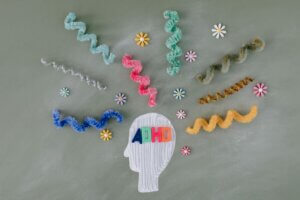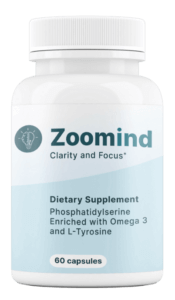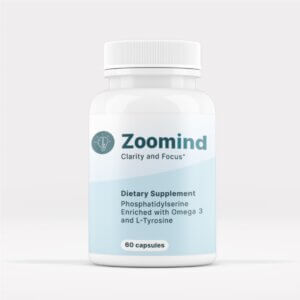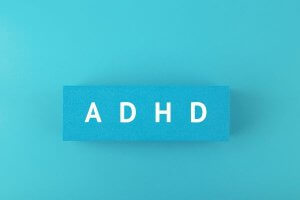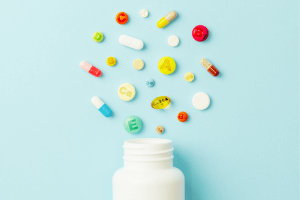Attention-deficit/Hyperactivity Disorder (ADHD) has grown to be a significant problem for both children and teenagers, affecting nearly ten percent of the population. Treatment of the disorder requires either prescription medication or natural food supplements that aim to correct the chemical imbalances in the brain that are the root cause of most cases of ADHD. It has been accepted that it’s not yet possible to cure ADHD with diet or with drugs, so both therapies aim to relieve the symptoms as long as they are being taken correctly and with proper professional healthcare supervision.
Boosting the body’s intake of Omega-3 polyunsaturated fatty acids (PUFAs) can benefit people with ADHD. Omega-3 fats are not produced in the body, so they must be part of the diet. A diet rich in healthy Omega-3 fats can restore the chemical balance in the brain and help correct cognitive and behavioral problems like ADHD.
The best natural dietary source of PUFA-rich fish oil for ADHD is cold-water fish such as salmon, sardines, tuna, etc. But in most Western cultures, it’s difficult to structure a diet for children that will deliver sufficient Omega-3 fats to make up for any deficiency. By some calculations, children would have to eat a minimum of 3 main meals each week made up of Omega-3-packed fish to maintain the necessary levels of fish oil for ADHD to prevent them from developing ADHD if they are susceptible.
Vulnerability to ADHD can come from multiple factors, which are as varied and unique as humans. Some contributors are beyond a person’s control, such as:
- Genetics, although it has been impossible to pinpoint any specific genes so far.
- Age is probably the most apparent influence because ADHD almost always appears in childhood and then diminishes over time, with only about half of the people experiencing persistent symptoms as they mature and generally at lower levels.
- Gender is an apparent distinguishing factor, with nearly four times as many boys than girls showing signs of the disorder up to puberty. Then, the ratio becomes inverted, where a more significant proportion of mature females than males show signs of ADHD.
Some are by-products of non-related features, such as diseases, neonatal conditions, and developmental delays. Then, there are voluntary actions like diet, education, behavioral therapy, and medication, which can promote the development of ADHD as well.
At the bottom of all these lies the state of the person’s brain health, which can be affected by and control every aspect of these influences.
How ADHD can Come from Chemical Changes in the Brain 
The brain is the main control center, receiving messages, making decisions, and issuing commands to the rest of the body. It’s helpful to picture the busy goings-on deep inside the brain as transporting packages, or perhaps individual people, across a river. Messages pass along the length of an individual nerve cell as an electrical impulse, the same way couriers come down to the banks of the river, waiting for a ferry to take their parcels across. To get over the tiny gap between two adjacent nerve cells (known as synapses), they must be converted into a chemical messenger that will jump over to another cell and be converted back into an electrical pulse that can continue on its way. The chemical messengers are called neurotransmitters.
Almost all discussions about how to reduce the effects of ADHD come down to making sure that the right kind of neurotransmitter, in the correct quantity, is available at the synapses in the brain so that the messaging can function correctly. The neurotransmitters known to influence the brain’s functioning and which can create the symptoms of ADHD are dopamine, norepinephrine, and serotonin.
Dopamine is linked to generating a sense of pleasure and plays a critical role in learning. When engaging in something enjoyable, the brain releases dopamine, making a person want to repeat the behavior. Dopamine is one of the “feel-good” neurotransmitters because it is heavily involved in reward and motivation. Lower dopamine levels can result in attention deficits, like those seen in ADHD.
Norepinephrine is involved in attention, alertness, and arousal. It’s part of the “fight-or-flight” response, which prepares the body for action in response to perceived threats or challenges. Some of ADHD’s symptoms that come from imbalances in norepinephrine are impulsivity and hyperactivity.
In all of the billions of individual actions in a person’s brain every second, there are no apparent differences between the roles of individual neurotransmitters, adding to the complexity of ADHD. Dopamine and norepinephrine work together, and imbalances in the levels of one can affect the other. The brain needs proper levels of dopamine, norepinephrine, and other neurotransmitters like serotonin; otherwise, behavioral disorders like ADHD, physical diseases like Alzheimer’s, and psychological disorders like depression may develop. There are ways to supplement the levels of these neurotransmitters, but so far, no actual cures for these disorders have been found.
Life with ADHD
According to Additude, about three-quarters of children with ADHD in the US undergo some form of ADHD treatment, either straightforward medication, behavioral therapy, or a combination. Medication is recommended for up to 70% percent of children with ADHD at varying stages of their school-going ages. Accepting that there is no medicinal cure for the disorder, the best that current medications can do is to lessen the symptoms.
The most commonly prescribed drugs are stimulants, in which the function is to increase dopamine levels. On the other hand, antidepressants and sedatives, which contain serotonin reuptake inhibitors (SSRIs), are designed to increase serotonin levels in the brain. They are not as effective as stimulants for treating attentional and cognitive symptoms but do work to reduce impulsive and hyperactive behavior.
As long-term treatments, both of these may have several adverse side effects. Stimulants can cause addiction (especially in teenagers and young college-going adults), personality changes, raised blood pressure and rapid heart rate, anxiety and irritability, headaches, and stomach aches. Also, when it needs to be taken for many years, in cases where childhood ADHD persists into adulthood, the body can build up tolerance to the stimulants, and increased dosages are needed to get the same benefit levels. This, in turn, increases addiction problems and other side effects.
Enhancing brain health in ADHD without drugs
There can be less invasive treatment with dietary supplements. These can correct disturbances in the dopamine, serotonin, and norepinephrine levels by adding high levels of omega-3 polyunsaturated fatty acids (PUFAs), which contain two of the brain’s two most prominent Omega-3 fatty acids, DHA (docosahexaenoic acid) and EPA (eicosapentaenoic acid).
Introducing Zoomind 
Our new supplement, Zoomind, combines the optimal mixture of DHA and EPA Omega-3 PUFAs in the ratio of 3:1, along with phosphatidylserine and L-tyrosine. It gives a simple, effective and efficient boost to a person’s diet, filling in any gaps that may have led to them developing ADHD.
Combining Omega-3 fatty acids, L-tyrosine, and phosphatidylserine has a synergistic effect, enhancing their combined brain-boosting benefits. These compounds’ interactions can improve memory, mood, and cognitive function.
- DHA plays an essential role in promoting communications in the brain. It supports optimal levels of neurotransmitters like dopamine and norepinephrine, as well as serotonin and acetylcholine.
- EPA has been shown to suppress the expression of a brain chemical (cytokine) that causes inflammation. There is evidence that ADHD is closely associated with inflammation. For example, children with ADHD are more likely to suffer from asthma and atopic dermatitis.
- Phosphatidylserine is a phospholipid, a type of fat found in high amounts in the brain, and is particularly important in maintaining the health of nerve cells. It works to improve memory and cognitive capacity.
- L-tyrosine is an essential amino acid needed to produce dopamine and norepinephrine. Having the proper levels of these neurotransmitters can improve focus and concentration.
Conclusion
Brain health is vital to our overall well-being and quality of life, and the availability and balance of the essential neurotransmitters play a vital role in getting full brain function. The medications commonly prescribed for ADHD, such as stimulant medications like amphetamines, work to maintain neurotransmitter levels but come with several adverse side effects. Omega-3 oils and phosphatidylserine support normal brain function by increasing the availability of these neurotransmitters via a dietary supplement that works more naturally without side effects. This can help improve attention and lower hyperactivity symptoms in people with ADHD.
FAQ
How do Omega-3 Fats Work for ADHD?
ADHD may be caused by trouble sending and receiving signals between brain cells with neurotransmitters. Omega-3 fatty acids help neurotransmitters work correctly and can also fight inflammation, which is a cause of ADHD.
Do Omega-3 Fats Improve Focus?
Dietary supplementation with omega-3 oils can improve brain health and performance. Boosted levels of omega-3 can lead to an improvement in blood circulation in the brain.
How Long Does it Take for Omega-3 Fats to Work for Concentration?
Taking high levels of Omega-3 fatty acids can result in optimal levels of EPA and DHA in the blood within one month. Still, it can take up to three months until the fatty acids saturate the brain and changes are seen.
What Are the Benefits of Omega-3-Fats for ADHD?
Dietary supplements for ADHD should come from fish oils made up of two omega-3 polyunsaturated fatty acids (PUFAs) – EPA (eicosapentaenoic acid) and DHA (docosahexaenoic acid). These fatty acids assist in cell communication and help regulate inflammation. Fish oils are much better sources of Omega-3 than alpha-linolenic acid (ALA), which is found in plant-based foods like walnuts and flaxseed.
Why do ADHD People lack Dopamine?
It has been shown that some people with ADHD have at least one defective gene, which makes it difficult for neurons to respond to dopamine. The neurotransmitter is involved in the regulation of attention and feelings of pleasure.
What is the Root Cause of ADHD?
Recent studies into what is the most significant cause of ADHD pinpoint genetics. ADHD tends to run in families, and research shows that siblings and parents of a person with ADHD are themselves more likely to have ADHD. Other possible causes and risk factors include brain injury and fetal exposure to lead during pregnancy or at a young age.
Do Omega-3 Fats from Fish Oil help Boost Dopamine in ADHD?
Omega-3 fats can boost the body’s dopamine synthesis, the same neurotransmitter that ADHD medications are meant to increase. Several research studies show that a daily supplement of a fish oil capsule can help curb the symptoms of ADHD.
What happens if you leave ADHD untreated?
Leaving ADHD untreated can lead to mental health disorders, including anxiety and depression. ADHD can lead to problems in focus, concentration, and impulsivity. Not being managed effectively may lead to irritability, frustration, and low self-esteem.
Can ADHD appear at any age?
There is growing evidence that ADHD is diagnosed more often in women in adulthood. ADHD is diagnosed in more than three times as many school-going boys than girls. There has never been any rational reason given for this difference. Experts dealing with the disorder now think that the difference is not in the number of children affected by the disorder but in the differences in how ADHD is diagnosed.

